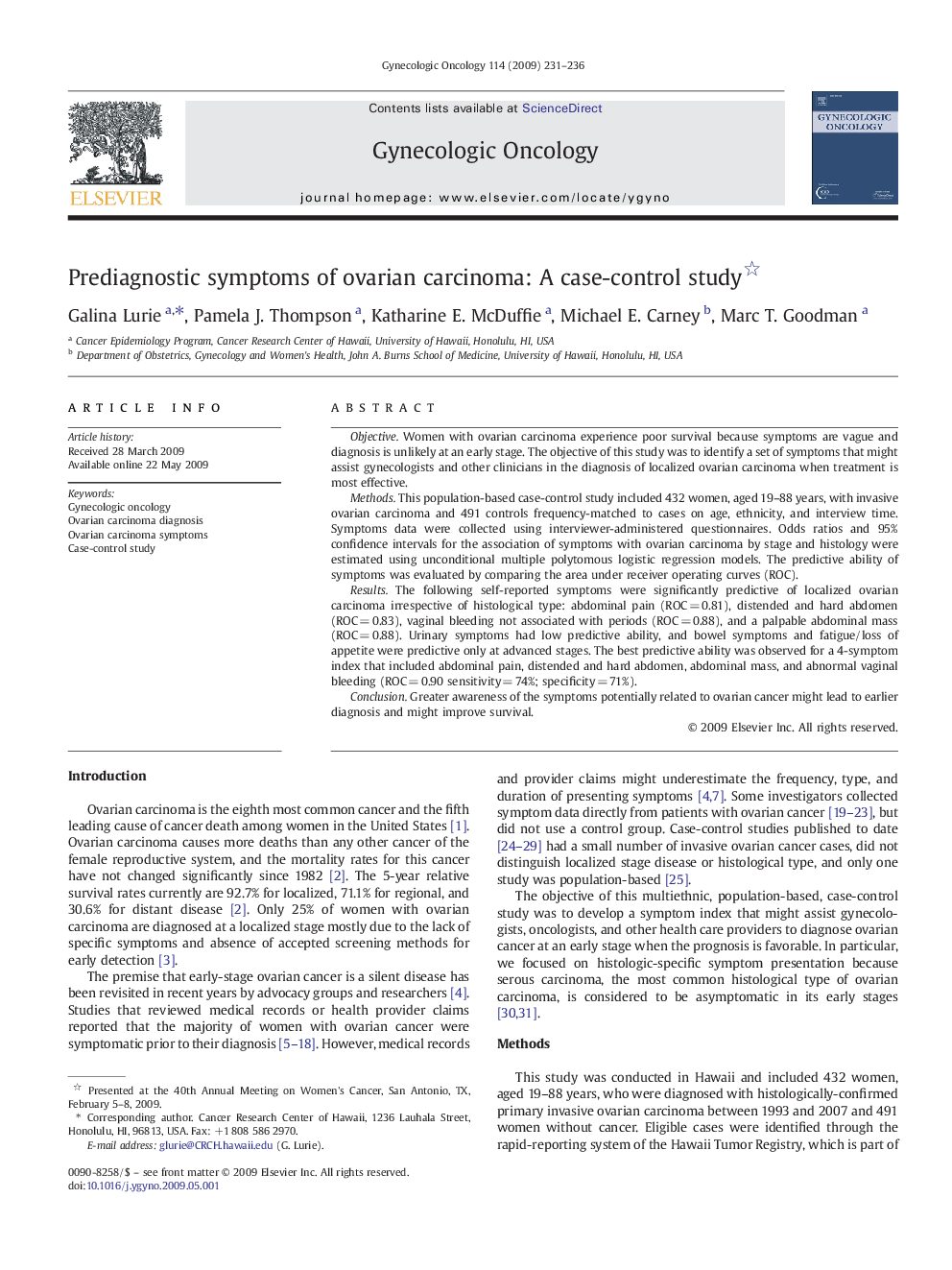| Article ID | Journal | Published Year | Pages | File Type |
|---|---|---|---|---|
| 3944253 | Gynecologic Oncology | 2009 | 6 Pages |
ObjectiveWomen with ovarian carcinoma experience poor survival because symptoms are vague and diagnosis is unlikely at an early stage. The objective of this study was to identify a set of symptoms that might assist gynecologists and other clinicians in the diagnosis of localized ovarian carcinoma when treatment is most effective.MethodsThis population-based case-control study included 432 women, aged 19–88 years, with invasive ovarian carcinoma and 491 controls frequency-matched to cases on age, ethnicity, and interview time. Symptoms data were collected using interviewer-administered questionnaires. Odds ratios and 95% confidence intervals for the association of symptoms with ovarian carcinoma by stage and histology were estimated using unconditional multiple polytomous logistic regression models. The predictive ability of symptoms was evaluated by comparing the area under receiver operating curves (ROC).ResultsThe following self-reported symptoms were significantly predictive of localized ovarian carcinoma irrespective of histological type: abdominal pain (ROC = 0.81), distended and hard abdomen (ROC = 0.83), vaginal bleeding not associated with periods (ROC = 0.88), and a palpable abdominal mass (ROC = 0.88). Urinary symptoms had low predictive ability, and bowel symptoms and fatigue/loss of appetite were predictive only at advanced stages. The best predictive ability was observed for a 4-symptom index that included abdominal pain, distended and hard abdomen, abdominal mass, and abnormal vaginal bleeding (ROC = 0.90 sensitivity = 74%; specificity = 71%).ConclusionGreater awareness of the symptoms potentially related to ovarian cancer might lead to earlier diagnosis and might improve survival.
